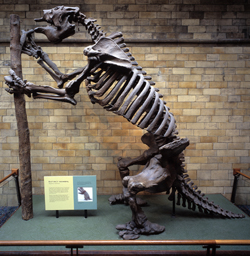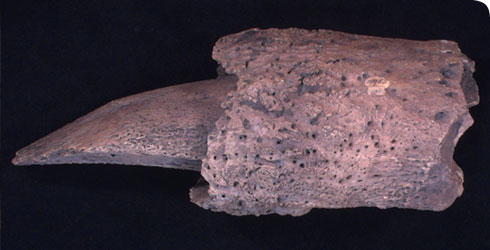Reconstructing the Megatherium skeleton
Megatherium americanum was first described by the famous French comparative anatomist Baron Georges Cuvier in 1796 on the basis of drawings of a mounted skeleton sent to him from Madrid. The Madrid skeleton had been brought over from the Spanish colonies in South America in 1785. After that, the remains of this gigantic sloth were avidly sought after by museums all over the world.
The Natural History Museum (then part of the British Museum) purchased Megatherium material from a Señor de Angelis in 1845. It had been collected from Lujan, near Buenos Aires in Argentina in 1837.
Meanwhile, the Royal College of Surgeons in England had Megatherium bones in their collection from the bed of the Rio Salada, just south of Buenos Aires, Argentina.

Plaster cast of the skeleton of Megatherium americanum on display at the Natural History Museum, London. It was reconstructed from two partial skeletons, one preserved at the Museum, and the other formerly in the collection of the Royal College of Surgeons of England but destroyed by bombing in the Second World War.
Making a complete skeleton to exhibit
In 1849, plaster casts of bones from both collections were put together to form a composite skeleton. A small number of missing bones were modelled to fit - mainly ribs and vertebrae. The skeleton was originally mounted on all four limbs, like the original Madrid specimen. We now know that Megatherium often supported most of its weight on its back legs, and so the skeleton was re-mounted to reflect this change in our understanding.
This skeletal reconstruction can still be seen at the Natural History Museum in London, where it has been on almost continuous public display since 1850.
